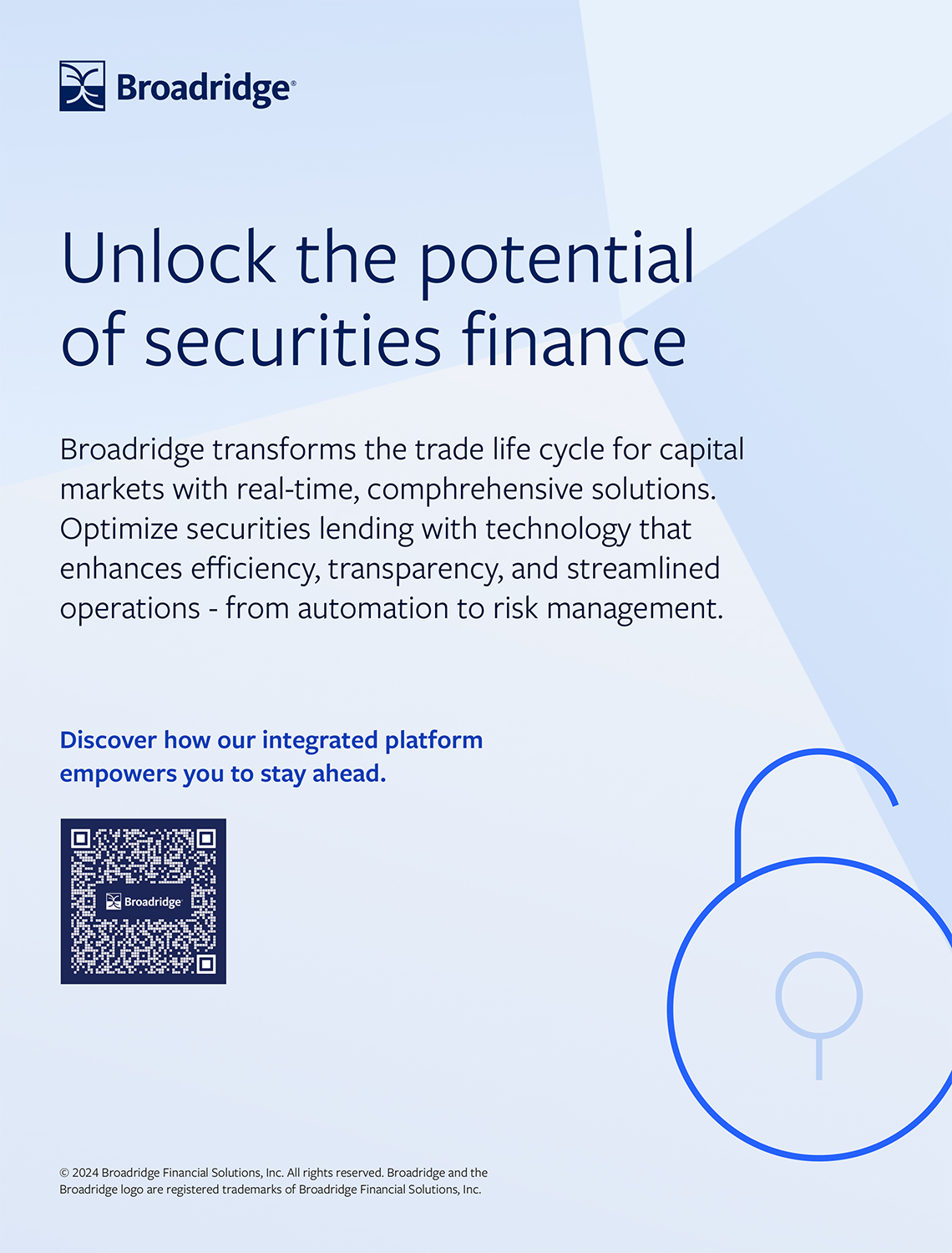PASLA: Interoperation across DLT platforms is paramount for success
11 March 2024 Singapore
 Image: Anastasiia/stock.adobe.com
Image: Anastasiia/stock.adobe.com
“As we build out the ecosystem of DLT platforms, we do not want to re-create the fragmentation of legacy securities settlement infrastructure. Interoperation across DLT platforms is paramount for the overall success of the global DLT ecosystem,” explained Guido Stroemer, HQLAX CEO.
The Pan Asia Securities Lending Association (PASLA) conference was held in Singapore, where market participants discussed real world use cases of emerging technologies in the securities finance ecosystem.
The panellists highlighted the different definitions of tokenisation that distributed ledger technology (DLT) platforms employ.
DLT platforms can represent books and records, or a registry-to-record ownership of legacy securities, fixed income and equity securities. Another form of tokenisation is the creation of a stable coin or a financial instrument that represents an actual security.
For Stroemer, synchronising ownership transfers for common clients across ledgers is key for the successful application of DLT platforms in global securities finance and repo industry.
DLT platforms are being used by global banks to drive tangible results in terms of client and shareholder value creation.
Stroemer pinpointed a “real interoperability use case” that is currently in the works across HQLAX, J.P. Morgan’s Onyx platform, Wematch and Ownera.
An intraday repo market is being created to facilitate ownership transfers of securities on HQLAX ledger, synchronised with ownership transfers of deposit tokens on the Onyx ledger.
The collaboration of the four firms aims to develop a novel solution that will enable the execution of repurchase transactions executed on the Wematch platform with delivery-versus-payment (DvP) settlement across two different distributed ledgers.
He said DLT platforms can help drive bottom line results by addressing specific pain points.
For example, Stroemer outlined a use case that is “near and dear to the audience at PASLA”, a securities lending use case to help reduce settlement lags in the popular US Treasury (UST) / Japanese government bonds (JGB) collateral swap.
A final point raised by Stroemer highlighted that DLT platforms could provide the global regulatory community with “a bird’s eye view over collateral chains” in the global securities finance and repo markets.
He indicated that this could potentially be a more cost effective and efficient industry solution “compared to current market practice for securities finance transaction reporting to trade repositories”.
The panel concluded that the road to market adoption is to convert pain points into solutions.
The Pan Asia Securities Lending Association (PASLA) conference was held in Singapore, where market participants discussed real world use cases of emerging technologies in the securities finance ecosystem.
The panellists highlighted the different definitions of tokenisation that distributed ledger technology (DLT) platforms employ.
DLT platforms can represent books and records, or a registry-to-record ownership of legacy securities, fixed income and equity securities. Another form of tokenisation is the creation of a stable coin or a financial instrument that represents an actual security.
For Stroemer, synchronising ownership transfers for common clients across ledgers is key for the successful application of DLT platforms in global securities finance and repo industry.
DLT platforms are being used by global banks to drive tangible results in terms of client and shareholder value creation.
Stroemer pinpointed a “real interoperability use case” that is currently in the works across HQLAX, J.P. Morgan’s Onyx platform, Wematch and Ownera.
An intraday repo market is being created to facilitate ownership transfers of securities on HQLAX ledger, synchronised with ownership transfers of deposit tokens on the Onyx ledger.
The collaboration of the four firms aims to develop a novel solution that will enable the execution of repurchase transactions executed on the Wematch platform with delivery-versus-payment (DvP) settlement across two different distributed ledgers.
He said DLT platforms can help drive bottom line results by addressing specific pain points.
For example, Stroemer outlined a use case that is “near and dear to the audience at PASLA”, a securities lending use case to help reduce settlement lags in the popular US Treasury (UST) / Japanese government bonds (JGB) collateral swap.
A final point raised by Stroemer highlighted that DLT platforms could provide the global regulatory community with “a bird’s eye view over collateral chains” in the global securities finance and repo markets.
He indicated that this could potentially be a more cost effective and efficient industry solution “compared to current market practice for securities finance transaction reporting to trade repositories”.
The panel concluded that the road to market adoption is to convert pain points into solutions.
NO FEE, NO RISK
100% ON RETURNS If you invest in only one securities finance news source this year, make sure it is your free subscription to Securities Finance Times
100% ON RETURNS If you invest in only one securities finance news source this year, make sure it is your free subscription to Securities Finance Times



